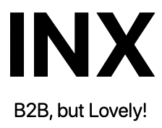In a recent report issued by the National Academies of Sciences, Engineering, and Medicine, a committee of 11 experts delved into the intricate relationship between youth and social media. Contrary to advocating for a blanket ban on social media for those 18 and younger, the committee’s findings suggest a nuanced perspective that considers both potential risks and benefits.
The report acknowledges the concerns surrounding social media use among youth, citing issues like unhealthy social comparisons leading to potential risk factors for eating disorders, and the displacement of time that could otherwise be dedicated to essential activities such as sleep, studying, exercise, and hobbies. Additionally, the distracting nature of social media platforms raised concerns about hindering the development of attention-related skills crucial for academic success and emotional regulation.
However, the committee stopped short of establishing a direct cause-and-effect relationship between social media use and widespread mental health issues among youth. Instead, they recommended a comprehensive approach, calling for further research and the establishment of robust industry standards for social media platforms.
While recognizing potential pitfalls, the committee emphasized the positive aspects of social media for youth, such as fulfilling their need for independence, fostering meaningful connections, and providing a platform for identity exploration. The delicate balance between risks and benefits led the experts to advocate for industry standards that prioritize transparency, enabling public and Federal Trade Commission tracking.
The recommendations extend beyond platform design, touching on crucial aspects such as improved protection from harassment, cyberbullying, and sexual exploitation. The committee also suggested the integration of media literacy into school curricula, accompanied by teacher training, to empower youth with the skills to navigate the digital landscape responsibly. crucial aspects such as improved protection from harassment, cyberbullying, and sexual exploitation.
In conclusion, the committee’s report encourages a holistic and collaborative approach to address the complexities of youth social media use. The goal is to create an environment that maximizes the positive aspects while mitigating potential harms, emphasizing the need for ongoing research, education, and industry cooperation.

